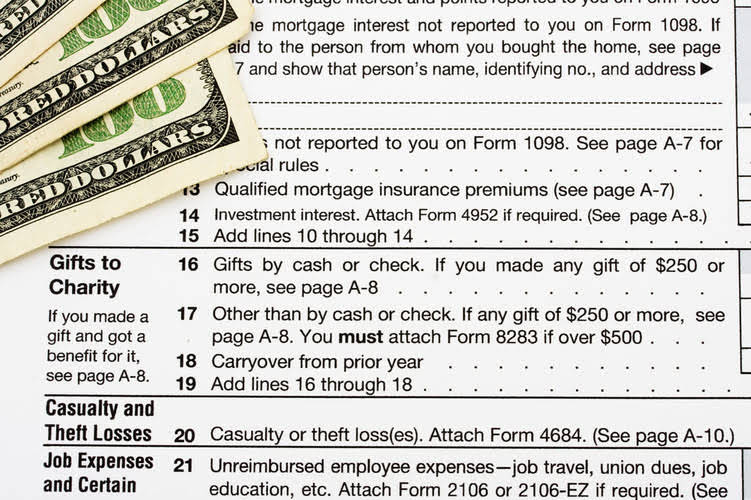Sometimes, the thing might be sold as is, but other times, it might be taken apart and the pieces sold. So, salvage value is the money a company expects to make when they get rid of something, even if it doesn’t include all the selling or throwing away costs. Salvage value helps to figure out how much your old stuff is worth when it’s done being useful. It’s the estimated value of something, like a machine or a vehicle, when it’s all worn out and ready to be sold.
- This often involves dismantling and disposal costs, which can be offset by recycling or repurposing components.
- The accurate calculation of salvage value is not merely a final step in the depreciation process; it is a pivotal factor that influences the entire lifespan of an asset.
- Accountants use several methods to depreciate assets, including the straight-line basis, declining balance method, and units of production method.
- In this example, the company is expensing $833.33 from the asset’s value every year for five years until it reaches its salvage value of $1,000.
- If the residual value assumption is set as zero, then the depreciation expense each year will be higher, and the tax benefits from depreciation will be fully maximized.
Methods to calculate salvage value
The IRS allows businesses to use the Accelerated Cost Recovery System (ACRS) or Modified Accelerated Cost Recovery System (MACRS) methods to determine the amount to be depreciated. The estimated remaining useful life of the asset is also important, which can be researched by looking at market examples of similar assets. To calculate salvage value, you need to know the original purchase cost of the asset, including any initial taxes, shipping fees, or installation costs. Calculating salvage value is a crucial step in determining the worth of business and personal assets. Assumptions include setting it to zero if minimal, using historical data or industry averages, and considering the asset’s condition and potential for resale or parting out at end-of-life.
How to Calculate NoPAT and Optimize Business Performance
On the income statement, the depreciation expense, influenced by the salvage value, affects the net income. A lower salvage value results fixed assets in a higher depreciation expense, reducing taxable income and potentially leading to tax savings. This interplay can have strategic implications for financial planning, as companies might adjust their depreciation strategies to optimize tax liabilities and financial performance metrics. Market conditions and technological advancements significantly influence salvage value. An asset’s value can be affected by changes in market demand or the introduction of newer technologies.

Factors Affecting Salvage Value Estimation
By employing various salvage value methods to estimate salvage values, companies can make informed decisions regarding their assets’ economic lives and optimize their financial reporting accordingly. Salvage value estimation has been a part of asset management practices for as long as businesses have needed to account for the depreciation of their assets. The concept helps in understanding how much value an asset retains over time and is critical in determining the annual depreciation expenses for financial reporting. The accurate calculation of salvage value is not merely a final step in the depreciation process; it is a pivotal factor that influences the entire lifespan of an asset. It affects the financial statements, tax obligations, and strategic planning for asset replacement.

We can see this example to calculate salvage value and record depreciation in accounts. J.B. Maverick is an active trader, commodity futures broker, and stock market analyst 17+ years of experience, in addition to 10+ years of experience as a finance writer and book editor. Salvage value is also referred to as disposal value, residual value, or scrap value. The Sales Forecasting salvage or the residual value is the book value of an asset after all the depreciation has been fully expired. CFI is the global institution behind the financial modeling and valuation analyst FMVA® Designation. CFI is on a mission to enable anyone to be a great financial analyst and have a great career path.

Yes, salvage value can be considered the selling price that a company can expect to receive for an asset at the end of its life. Therefore, the salvage value is simply the financial proceeds a company may expect to receive for an asset when it’s disposed of, though it may not factor in selling or disposal costs. It includes equal depreciation expenses each year throughout the entire useful life until the entire asset is depreciated to its salvage value. It can be calculated if we can determine the depreciation rate and the useful life.

Companies often implement comprehensive maintenance schedules to preserve asset value. Remember, the goal isn’t to make a perfect prediction (that’s almost impossible) but to make a solid estimate that helps you plan. Whether leasing a car, buying manufacturing equipment, or managing a fleet of vehicles, understanding residual value puts you in a better position to make sound financial decisions. When a consumer leases a vehicle, the leasing company estimates the car’s residual value at the beginning of the lease.
- One important accounting concept that comes into play is the matching principle.
- Salvage value is the amount a company can expect to receive for an asset at the end of the asset’s useful life.
- Salvage value, also known as residual value or scrap value, plays a crucial role in capital budgeting and financial decision-making.
- A business that consistently underestimates or overestimates salvage value can give an inaccurate picture of its financial health.
- On the other hand, a tax authority may have specific rules that dictate the minimum or maximum salvage value that can be used for tax depreciation purposes.
- A depreciation schedule helps you with mapping out monthly or yearly depreciation.
Example of salvage value calculation for a car belonging to a business for after and before tax
From different perspectives, experts offer insights on estimating salvage value. Some argue for using the book value approach, which considers the asset’s original cost minus accumulated depreciation. This method provides a conservative estimate, as it assumes the asset will have minimal value at the end of its useful life. With a large number of manufacturing businesses relying on their machinery for sustained productivity, it is imperative to keep assessing the equipment they own. Constant use and other factors like the nature and quality of these assets cause a continual deterioration.





